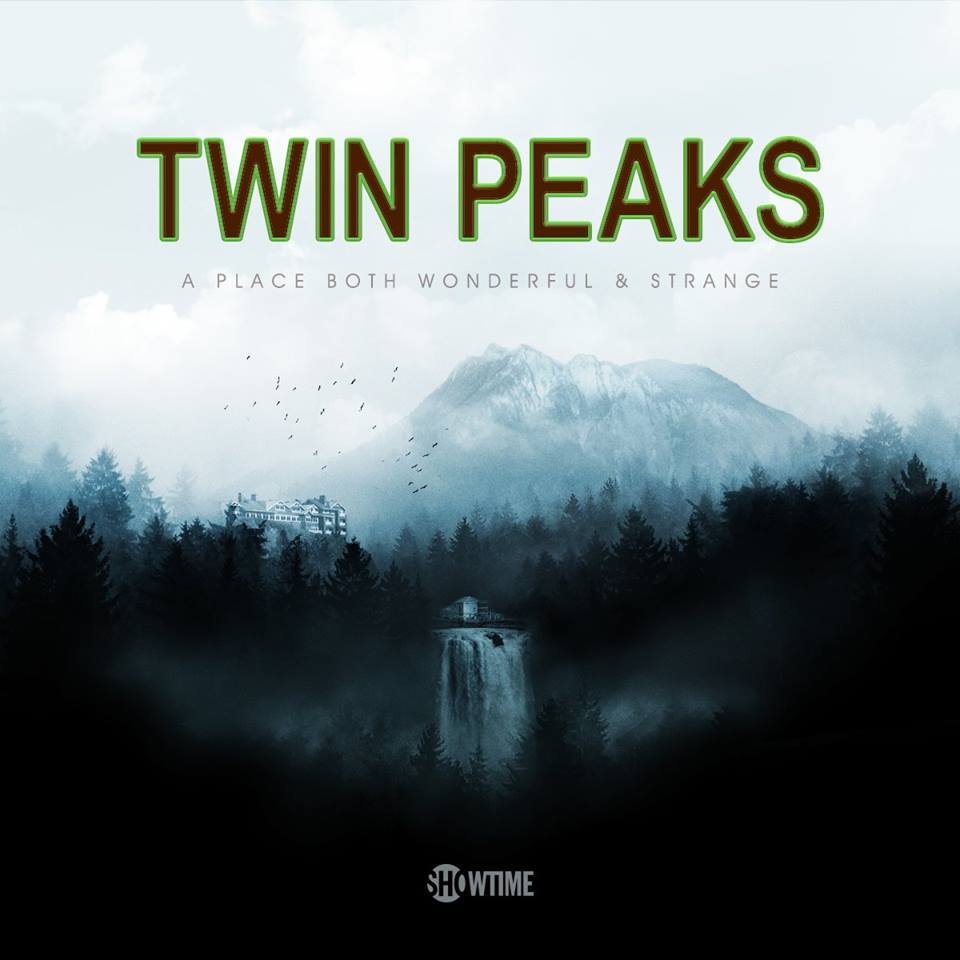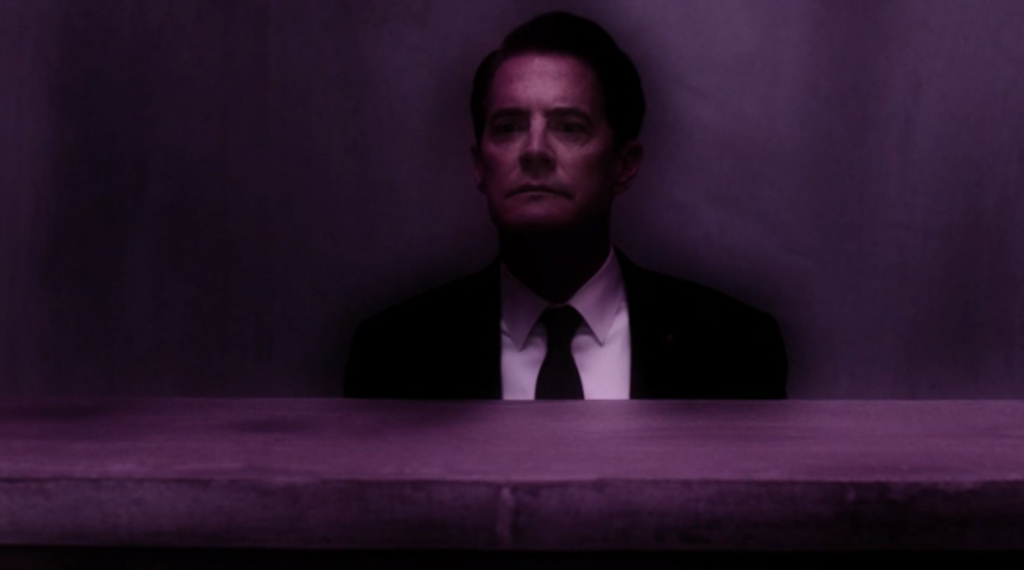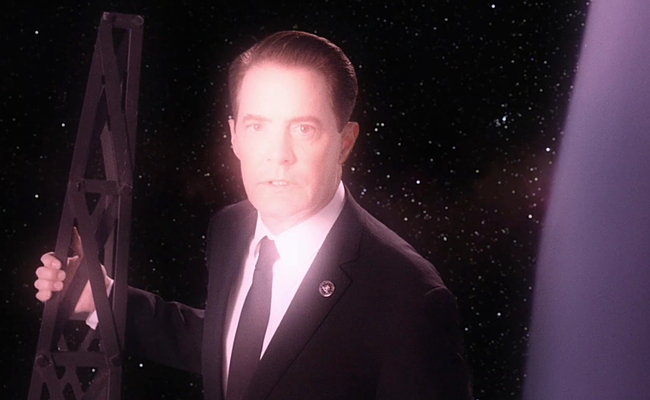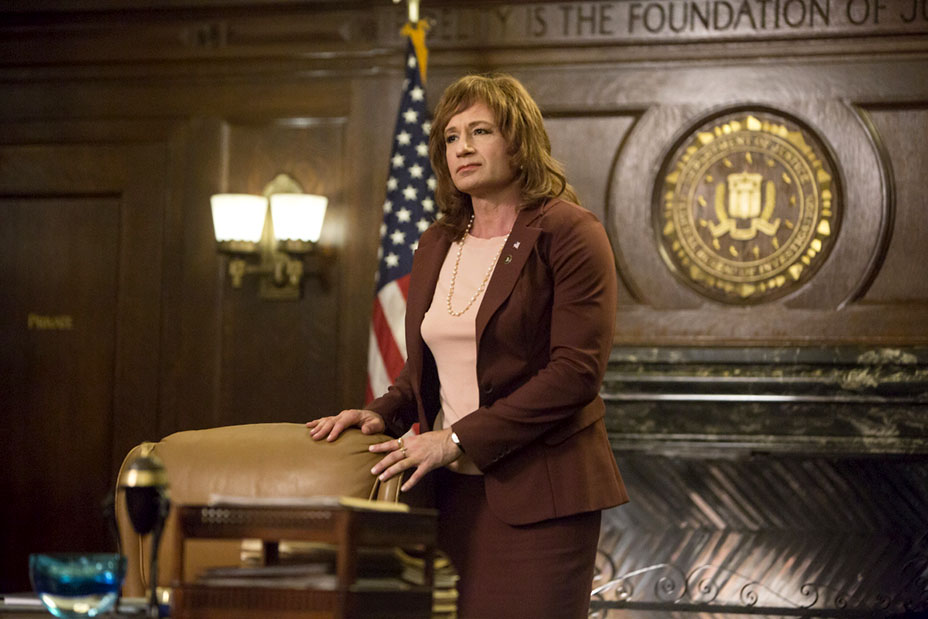
Once upon a time, there was a school of thought in various quarters of the largely self-appointed “intelligentsia” that posited that David Lynch was something of a fraud. It was never more than a minority opinion, of course — certainly nowhere near as large as the chorus of voices that said much the same about Lichtenstein, Warhol, John Cage, or even James Joyce — and it’s one that pretty much disappeared in the wake of the near-universal praise heaped upon THE STRAIGHT STORY and MULHOLLAND DRIVE, but it was something that dogged his tail for a good couple of decades prior to reaching his currently-enjoyed plateau of (more or less) unanimous acclaim. The argument, such as it was, essentially boiled down to this : the guy simply slaps a bunch of weird imagery up on the screen and none of it actually means anything, but it’s done in a clever enough way to make the gullible believe that there’s some elusive “hidden meaning” behind it all that’s forever just beyond their grasp.
I never bought into it, but I did notice a fair number of fraudulent Lynch fans glomming onto his work when he first became a “hot property” in the late ’80s/early ’90s, and they bailed on him quickly — and completely — the minute it became fashionable to move (hell, run) in the opposite direction. Think about it: WILD AT HEART won the Palme D’Or at Cannes in 1990, and a mere two years later TWIN PEAKS: FIRE WALK WITH ME was roundly booed at its premiere there. But which film is more talked about — and lauded — now? And why the sudden change “back in the day?”
Well, the soft underbelly of Lynch pseudo-fandom began bailing on the director fairly early during season two of Twin Peaks, pissed off that the Laura Palmer murder mystery supposedly dragged on for too long — but when it finally was solved (at the network’s insistence), that seemed to piss this suddenly hyper-critical rump of viewers off even more, and when the show had the temerity to shift gears in another direction afterwards with the unfairly-maligned Windom Earle storyline, that seemed to be the final nail in the coffin. It was the very definition of a “can’t-win” situation for both Lynch and co-creator Mark Frost, and as ratings tanked, ABC’s schedulers began to fuck with the program mercilessly, first relegating it to a Saturday night “death slot” and then airing it irregularly at various times when they simply had nothing else to plug into their lineup. In the end, the final two episodes were broadcast as a two-hour “movie of the week” on a Monday night in June (back when the summer months were a veritable graveyard for network television programming) nearly two months after the show had last been seen or heard from. At that point, it’s safe to assume that a fair number of people had already assumed that Twin Peaks was over with and weren’t looking for it in the pages of TV Guide (remember those?) anymore. And so a series that had arrived with one of the loudest “bangs” in history exited the stage some 18 months later with a whimper so quiet that almost no one even heard it.
For the Twin Peaks 2017 revival — or, if you prefer, Twin Peaks: The Return — Lynch and Frost have wisely decided to run the pretenders off as quickly as possible. Trust me when I say that if the first two parts weren’t enough to send the hopeless nostalgia-hounds and pathetic bandwagon-jumpers packing, the opening twenty-ish minutes of part three will almost certainly finish the job, because the surreal odyssey that marks the return of Special Agent Dale Cooper to the “real” world is absolutely unlike anything else that’s ever appeared on a TV screen, to the extent that they make even the hallucinatory final episode of the series’ first go-round look like child’s play.
Coop in space? Believe it. The brief return of Major Garland Briggs (the deceased Don S. Davis) cryptically stating “Blue Rose” before disappearing back into the ether? Believe it. The most visually arresting — and confounding — thing Lynch has done since ERASERHEAD? Believe that, too.

And yet for all the wonderfully rich “high weirdness” on display, things are actually playing out in a fairly straightforward manner: we finally see how inhabitants of the Black Lodge travel by means of electrical currents (something previously hinted at in FIRE WALK WITH ME), we get a fairly quick explanation of the “253 — time after time” bit of cryptic numerology laid on us last week, and when a third iteration of Cooper (Kyle MacLachlan’s sporting a paunch and hairpiece this time) named “Dougie Jones” is thrown into the mix, his origins (and purpose) are deciphered in short order by one-armed man Phillip Gerard (Al Strobel).
Okay, yeah, I absolutely can’t explain Dougie’s rapid-fire demise — or what the hell is up with the woman with sewed-shut eyelids who sacrifices herself to grease the wheels of Cooper’s return trip home — or the sudden appearance of a second woman who takes her place — or the big number “15” on the even bigger electrical outlet that Dale travels through — or why it’s taped over with a “3” when next we see it — but hey, we’ll get to all that in due course, I’m sure.
The extended sequence that takes place in the “world between worlds” that Cooper finds himself waylaid at/in is absolutely gorgeous — complete with purple-tinged skies, flickering stop-motion movement, and a more successful appropriation of A Trip To The Moon-style imagery than largely talentless future conspiracy theory nutcase Billy Corgan (you wanna talk about artistic frauds —) could have possibly dreamed up back when he was ripping off that same aesthetic for his wretched “masterwork” Mellon Collie And The Infinite Sadness — but it’s much more than a mere example of Lynch flexing his admittedly powerful visual muscle : nope, everything we see and experience here plays right into the next step of the “real world” storyline that’s slowly and inexorably taking center stage in the proceedings. Following his re-emergence, Cooper assumes Dougie’s life more by default than choice — complete with Naomi Watts for a wife and a young son named “Sonny Jim” — but not before winning one slots jackpot after another thanks to some timely Black Lodge/Red Room intervention, cruising around Vegas in a hooker’s Jeep, narrowly avoiding an assassination attempt, and not avoiding a run-in with an annoyingly gregarious Ethan Suplee. Oh, and did I mention that he’s basically catatonic the whole time?

I’m sure it sounds hopelessly cliched to say “it’ll make more sense once you’ve seen it,” but nevertheless, it’s absolutely true. Maybe not a ton more, mind you, but enough — and besides, Twin Peaks fans are well accustomed to the notion of having unanswered questions rattling around in our brains, sometimes for decades.
For all that, though, it appears as if many of our long-standing queries really are on the cusp of finally being answered, particularly the ones left over from FIRE WALK WITH ME. Besides “Blue Rose” and electrical-grid physical transference, part three of The Return also re-introduces us to the green Owl Cave ring and the creamed corn motif (mixed with poison and expelled in the most violent and disgusting way possible by both Dougie and the “Doppleganger Dale” we met in parts one and two), so who knows? Maybe we really are getting closer to figuring out — I dunno, something.
The tail end of part three, and the bulk of part four, showcase the genius sense of timing that Lynch and Frost employed so effectively early on in Twin Peaks‘ initial run — having taken us pretty far “out there,” we’re now reeled back in to that which we knew before, albeit with a completely different, and expanded, perspective. The FBI offices are our first stop, where Cooper’s old boss, Gordon Cole (played, as ever, by Lynch himself) and frequent sidekick, Albert Rosenfeld (the late Miguel Ferrer) appear not to have changed a whit over the last two-and-a-half decades, although they are now joined by lovely “third wheel” agent Tammy Preston (Chrysta Bell) as they head for South Dakota to interview newly-incarcerated Cooper/BOB, an assignment personally signed off on by the Bureau’s new chief of staff — Denise Bryson (David Duchovny)!
So, yeah, it’s “Old Home Week” at the J. Edgar Hoover office building, but don’t worry, some new faces turn up, as well — most notably none other than Richard Chamberlain in the role of Denise’s second-in-command — and the same is true once we find ourselves back in Twin Peaks proper, where we finally meet Sheriff Frank Truman (played with typically stunning “deadpan panache” by the inimitable Robert Forster), learn that Bobby Briggs (Dana Ashbrook) is now employed as a deputy tasked with tracking down the very same drug dealers that he used to be/run with, and Michael Cera even turns up in a beyond-memorable cameo as Lucy (Kimmy Robertson) and Andy (Harry Goaz)’s son, Wally, talking and dressing like Brando and living like Kerouac. In short, if you felt like the “old-school” quirky charm of this series was missing in parts one and two (apart from Michael Horse’s Deputy Hawk, of course) rest easy — it’s present and accounted for now, and sliding back into it feels was warm and comfortable as a favorite pair of slippers..

Perhaps what’s most exciting — and intriguing — about Twin Peaks 2017, though, is that Lynch and Frost are using the familiar and “safe” as a counter-balance to, and enhancement of, the new, the unfamiliar, and the potentially dangerous. For every character who seems to be more or less exactly as we remembered them, there’s an Agent Cooper or a Dr. Jacoby (Russ Tamblyn) who are clearly anything but. For every fan favorite locale (like the Sheriff’s station or the Bang Bang Bar — speaking of which, is everyone loving the “live band” musical sequences at the end of each segment as much as I am?), there’s a mysterious and foreboding far-off setting, including outer fucking space. The tried and true, then, may indeed be the soul of this new series, but it’s most assuredly not its backbone, and I don’t know about you, but I’d say that’s a refreshingly gutsy move.
At this point it’s more than fair to say that, much like our intrepid “showrunners,” I’m much more concerned about looking forward than I am backward, as well. Part Five of Twin Peaks: The Return can’t come soon enough, and while events seem to be leading us back home, I think we’re about to discover that it’s a place we never knew as well as we thought we did.
Tags: Al Strobel, Chrysta Bell, David Duchovny, David Lynch, Don S. Davis, Ethan Suplee, Kyle MacLachlan, Michael Cera, Miguel Ferrer, Naomi Watts, robert forster, Russ Tamblyn, Showtime, TV, Twin Peaks


No Comments